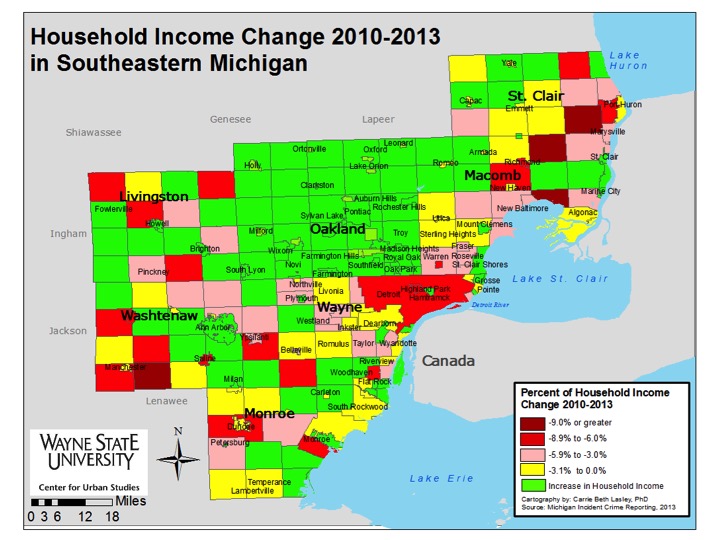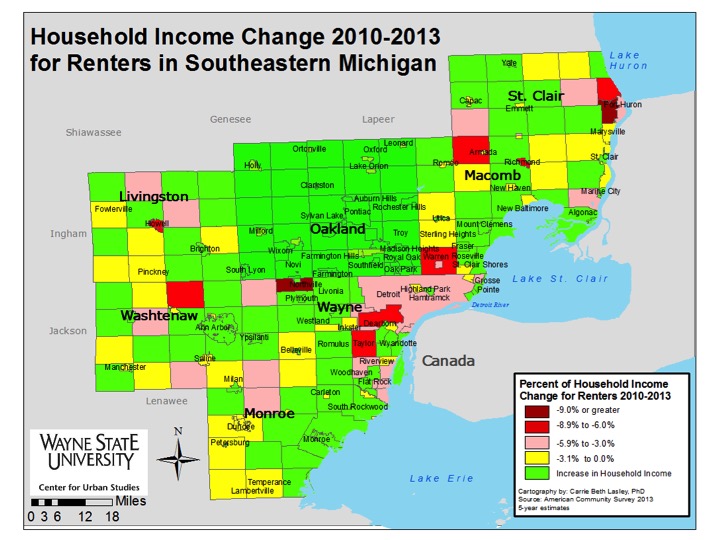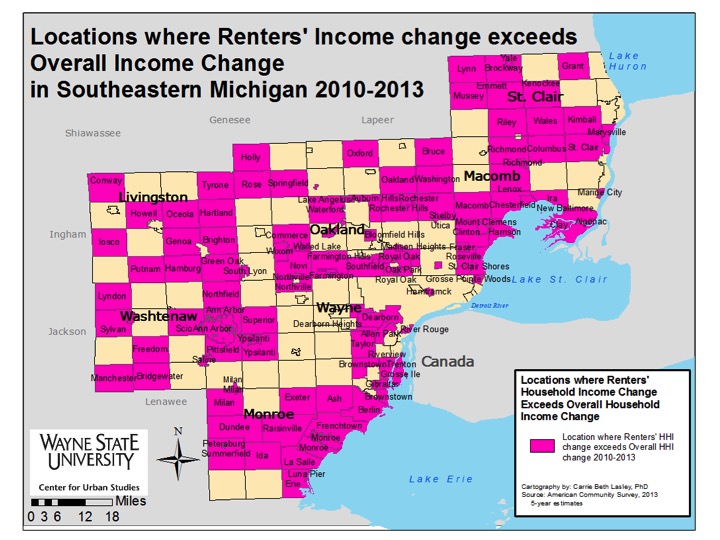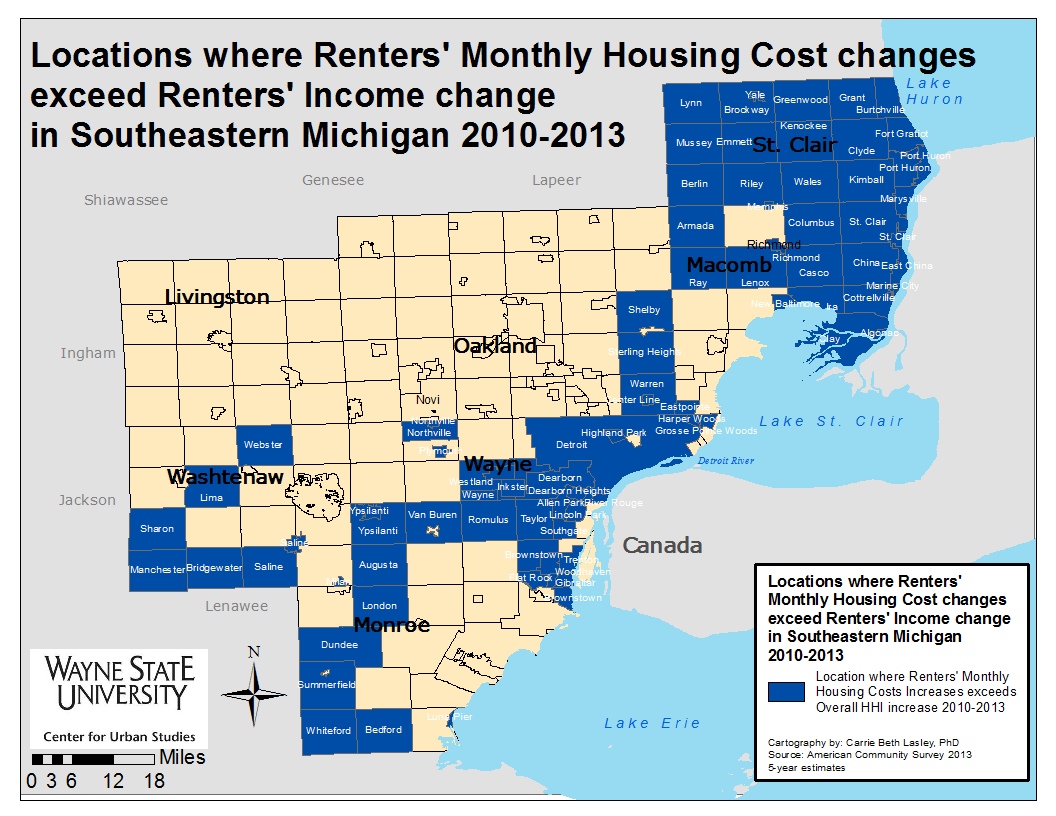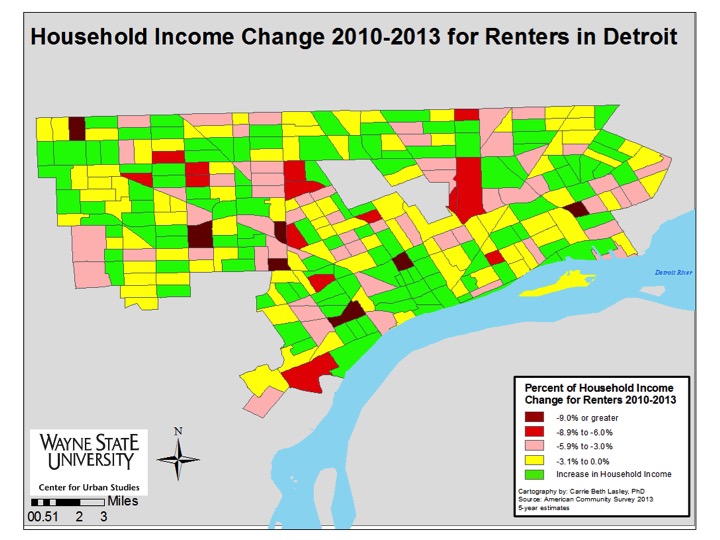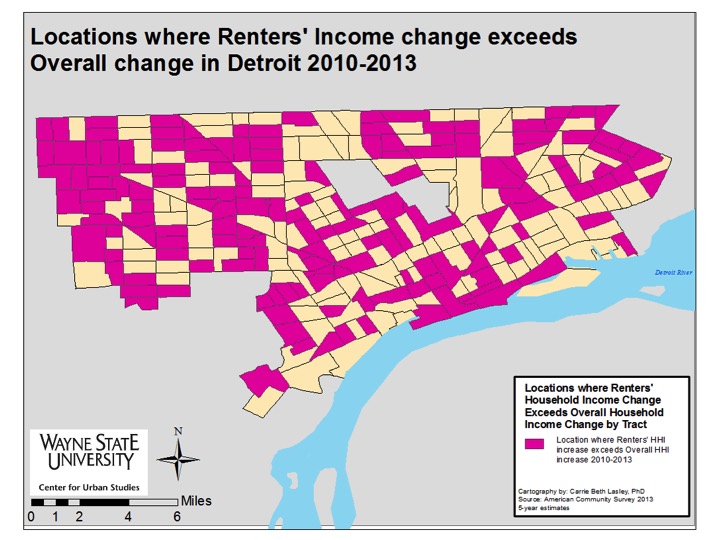In Southeastern Michigan the range of median household incomes is vast. In Highland Park the median household income is about $16,000, and only 25 miles away the city of Bloomfield Hills has a median income of about $187,000. There are only three communities in Macomb, Oakland and Wayne counties that have a median household income above $152,000, and all three of those communities (Bloomfield Hills, Lake Angelus and Orchard Lake) are located in Oakland County. Conversely, there are about 25 communities in those three counties where the median income is less than $50,000, with most of those communities being located in Wayne County.

While the range of median incomes regionally is immense, the map below further shows just how wide that range is when looking at it from a national perspective. With a median income of about $187,000, the city of Bloomfield Hills ranks in the 90th percentile for median household income nationwide, as does the city of Lake Angelus ($166,000 median household income). Just a mere 25 miles away though, there are five cities with median household incomes that rank in only the 10th percentile nationwide. Those cities are:
- Highland Park: $15,699
- Ecorse: $23,556
- Hamtramck: $24,369
- Royal Oak Township: $26,406
- Detroit: $27,838
A deeper look at the map below shows that most of Oakland County has households with median incomes in at least the 50th percentile nationwide. Macomb and Wayne counties are primarily made up of communities with median household incomes in the 30th and 40th percentiles nationwide.

When examining median household incomes in Southeastern Michigan through a global lens, the gap between communities like Highland Park and Bloomfield Hills does shrink. As shown in the map below, the city of Highland Park ranks in the 63rd global percentile for median household incomes and the city of Bloomfield Hills ranks in the 99th percentile. What this map shows is that on a global level, even our communities with the lowest median household incomes fare far better than many communities throughout the world.
According to the Washington Post, a $59,000 a year income ranks in the 40th national percentile but in the 91st percentile globally. About 70 percent of the U.S. population falls in the global middle class, which the Washington Post defines as being able to afford the basics (food, clothing and shelter) while also having some disposable income.




